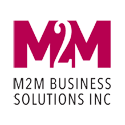There is no beginning. There is no end. There is only change.” — Robert Monroe
We are born, and then we die. But is that the end? I believe life itself is eternal. And yet nothing remains constant. Change is the only constant, they say.

Let’s apply this universal principle and look at the journey of an employee.
A typical journey of employees ‘supposedly’ starts with them joining an organization and finally leaving one day.
But is that truly the beginning and the end?
Most certainly, not.
Long before they join you, they know about you. And long after leaving, they’re still spreading the word about you.
As leaders, we should always focus on enriching every touchpoint of the employee lifecycle. The more enriching the lifecycle, the more positive will be their overall experience.
I’m outlining 8 stages of the employee’s journey in an organization with some valuable tips on how to make each of them more enriching and engaging –
The 8 Stages of the Employee Journey
Stage #1: Awareness- Letting them Know That You Exist
The lifecycle of an employee begins even before you make any contact. Does that mean it’s not a touchpoint? Not at all. This stage sets the tone for the rest of the journey to quite an extent.
Here are a few tips that can help organizations get it right at this stage.
- Make Yourself Visible
Are you at places where your employees are? LinkedIn, Facebook, Twitter? Being on these platforms is no longer an option.
- Work on Brand Awareness
Managers can attend conferences and seminars and regularly contribute to leading industry websites and magazines to build a strong company profile.
Stage #2: Attraction- From Just Knowing You to Liking You
No matter how strong or innovative your product/service lineup is, the company can fail without attracting and retaining the right talent.
Here’s how organizations can ace the attraction stage and build a strong employer brand-
- Work on Employer Branding
Employees are the biggest promoter of a company. Through effective employer branding, you can showcase your awesome culture to others.
- Offer the Right Compensation and Benefits
You don’t need to pay top dollar to attract the best talent. However, you should stick to industry standards and make the offer appealing with carefully-thought benefits.
Stage #3: Recruitment- Hiring Top Talent
This is the first point of contact between an employer and a potential employee. Therefore, making a great first impression is equally important for both parties, not just the candidates.
Here’s how organizations can optimize the recruitment stage-
- Create a Recruiting Plan
The recruiting plan should include everything right from the questions you’ll ask to the number of interview rounds a candidate needs to clear before getting selected.
- Keep It Quick, Smooth, and Transparent
Eliminate as many bureaucratic and administrative procedures as possible and keep everything straightforward and swift.
Stage #4: Preboarding & Onboarding: Well Begun is Half Done, Quite Literally
In one of my earlier posts on Winning in the Employee Retention Game, I wrote about how companies can have only a 50% success rate from the time they give job offers to retaining them beyond 90 days.
This is why preboarding and onboarding become so important. Some key strategies for this are-
- Make the Employees Feel Welcomed
Sending a welcome letter, e-card, or a welcome basket with company goodies before the joining day is a great way to welcome new employees.
- Build a Custom Onboarding Plan
Build a customized plan based on the needs of an organization, its leaders, and its employees. The plan should clearly lay down expectations,
Stage 5: Retention- Making Top Performers Stick
While attrition is inevitable, an improved retention strategy can protect an organization against regular replacement costs and promote employee satisfaction and longevity.
Here are some tips for retaining key employees-
- Build a Healthy Work Environment
It is an umbrella term comprising work culture, growth prospects, compensation, and interpersonal relationships between team members.
- Provide a Healthy Work-Life Balance
To retain top talent, start investing in their personal lives. Vacation vouchers, gym memberships, and flexible office-remote working are some great examples.
Stage 6- Development: Give Wings to Their Ambitions
Most employees want to advance toward their career and life goals. You can support their ambitions through various skill development initiatives and provide them with growth opportunities.
Here are some tips.
- Encourage External and Internal Learning
Enroll the employees in offline/online skill training programs. Buddy systems or peer learning programs are also highly effective in developing skills and improving team members’ relationships.
- Discuss Professional Goals with Employees
You can also discuss short-term and long-term professional goals with the employees and see how you can support them.
Stage 7- Separation: All Experiences Eventually End
The employee lifecycle comes to an end with separation. While I recently wrote about letting go of your employees in detail, here are a few things to keep in mind.
- Be Open to Honest Feedback
Use exit interviews as an opportunity to better understand their experience of working at your company. Take their feedback positively and initiate changes if required.
- Encourage Teams to Look Forward
Departures can impact team morale. Encourage team members to look ahead and make them believe that the organization will eventually recover from losing a great employee and continue growing.
Stage 8- Beyond Separation – Nothing Ever Comes to an Absolute End
Just because an employee has left your organization doesn’t necessarily mean that the relationship between the organization and the employee has ceased to exist. They might still be friends with their colleagues working in the organization, or they might still be spreading the word about you. Here’s how to optimize this experience for them.
- Keep in Touch
Use events like birthdays and festivals to keep in touch with your old employees.
- Build an Alumni Program
Build Alumni programs that can still make them feel part of the clan.
Refine Employee Journey to Refine Company Growth
The employees are the biggest asset of every successful organization; they deserve our attention and involvement.
As leaders, we can use these tips and build a happier, more engaged, productive, and satisfied workforce that consistently contributes to our organization’s growth and success.


